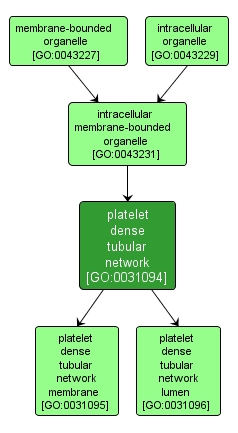| Desc: |
A network of membrane-bounded compartments found in blood platelets, where they regulate platelet activation by sequestering or releasing calcium. The dense tubular network exists as thin elongated membranes in resting platelets, and undergoes a major ultrastructural change, to a rounded vesicular form, upon addition of thrombin. |














